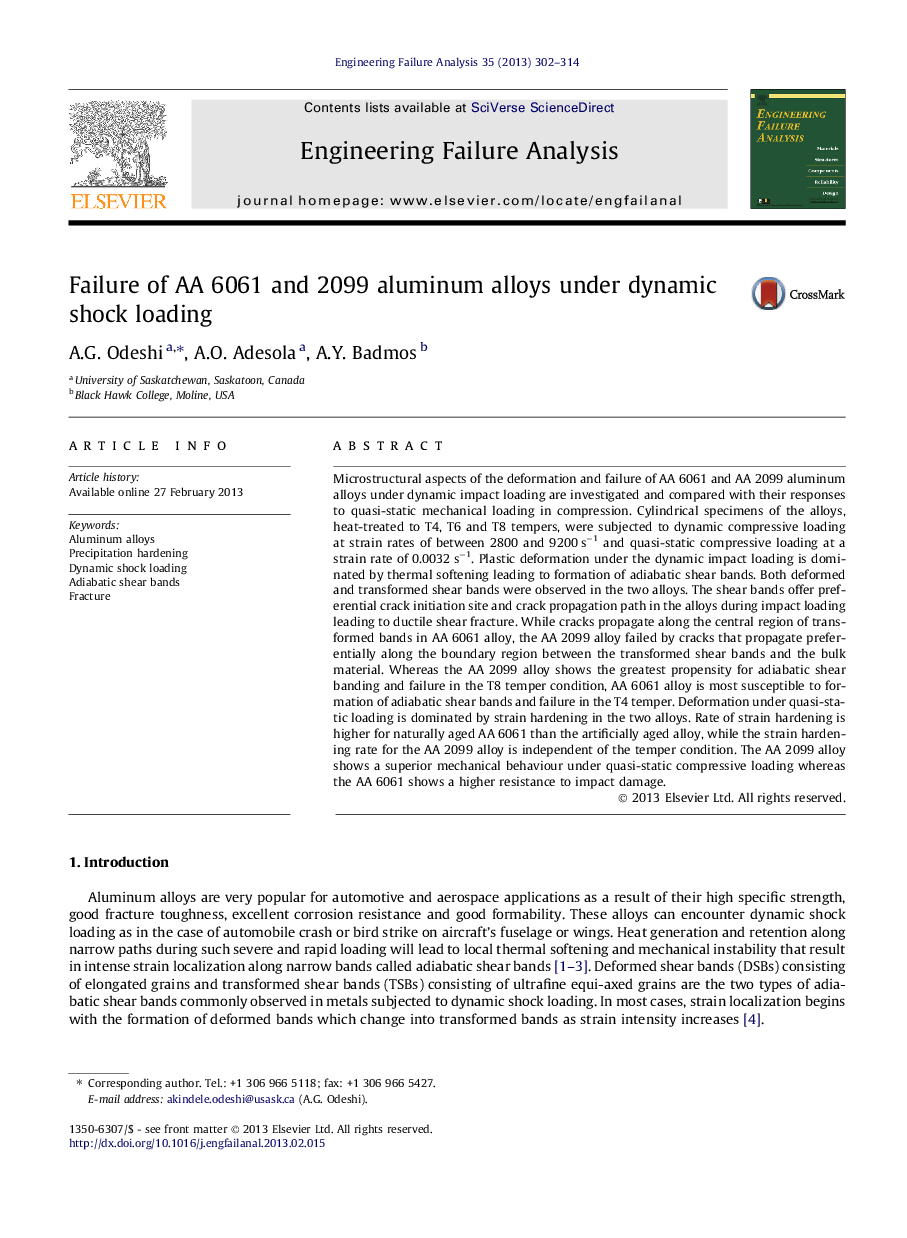| Article ID | Journal | Published Year | Pages | File Type |
|---|---|---|---|---|
| 773995 | Engineering Failure Analysis | 2013 | 13 Pages |
Microstructural aspects of the deformation and failure of AA 6061 and AA 2099 aluminum alloys under dynamic impact loading are investigated and compared with their responses to quasi-static mechanical loading in compression. Cylindrical specimens of the alloys, heat-treated to T4, T6 and T8 tempers, were subjected to dynamic compressive loading at strain rates of between 2800 and 9200 s−1 and quasi-static compressive loading at a strain rate of 0.0032 s−1. Plastic deformation under the dynamic impact loading is dominated by thermal softening leading to formation of adiabatic shear bands. Both deformed and transformed shear bands were observed in the two alloys. The shear bands offer preferential crack initiation site and crack propagation path in the alloys during impact loading leading to ductile shear fracture. While cracks propagate along the central region of transformed bands in AA 6061 alloy, the AA 2099 alloy failed by cracks that propagate preferentially along the boundary region between the transformed shear bands and the bulk material. Whereas the AA 2099 alloy shows the greatest propensity for adiabatic shear banding and failure in the T8 temper condition, AA 6061 alloy is most susceptible to formation of adiabatic shear bands and failure in the T4 temper. Deformation under quasi-static loading is dominated by strain hardening in the two alloys. Rate of strain hardening is higher for naturally aged AA 6061 than the artificially aged alloy, while the strain hardening rate for the AA 2099 alloy is independent of the temper condition. The AA 2099 alloy shows a superior mechanical behaviour under quasi-static compressive loading whereas the AA 6061 shows a higher resistance to impact damage.
► Deformation behaviour of AA 2099 and AA 6061 aluminum alloys are compared. ► AA 2099 has higher deformation resistance under quasi-static compressive loading. ► Deformation and failure resistance of AA 6061 is higher under impact loading. ► Susceptibility of AA 6061 to impact failure is highest in the T4 temper condition. ► AA 2099 is most susceptible to impact failure in the T8 temper condition.
